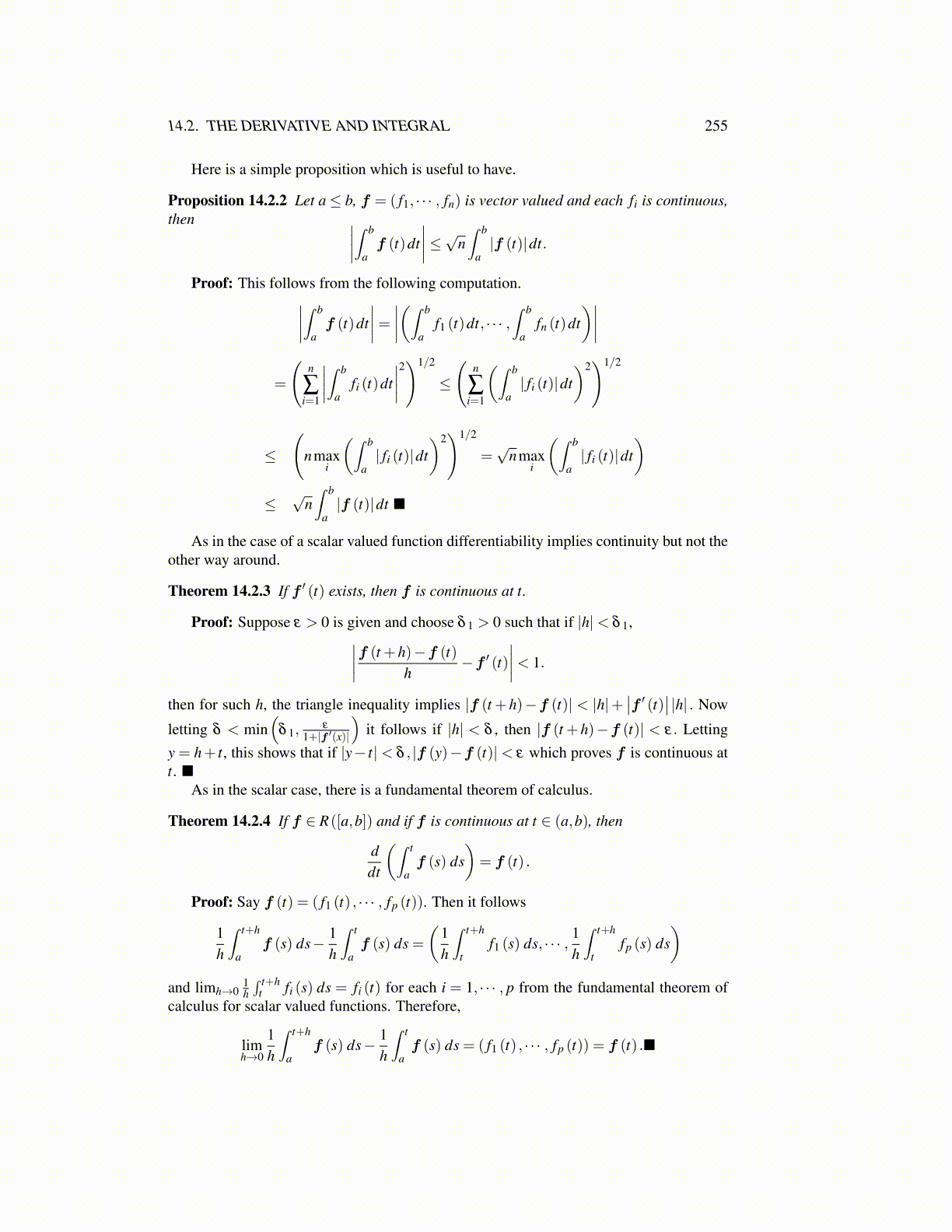
14.2. THE DERIVATIVE AND INTEGRAL 255
Here is a simple proposition which is useful to have.
Proposition 14.2.2 Let a≤ b, f = ( f1, · · · , fn) is vector valued and each fi is continuous,then ∣∣∣∣∫ b
af (t)dt
∣∣∣∣≤√n∫ b
a|f (t)|dt.
Proof: This follows from the following computation.∣∣∣∣∫ b
af (t)dt
∣∣∣∣= ∣∣∣∣(∫ b
af1 (t)dt, · · · ,
∫ b
afn (t)dt
)∣∣∣∣=
(n
∑i=1
∣∣∣∣∫ b
afi (t)dt
∣∣∣∣2)1/2
≤
(n
∑i=1
(∫ b
a| fi (t)|dt
)2)1/2
≤
(nmax
i
(∫ b
a| fi (t)|dt
)2)1/2
=√
nmaxi
(∫ b
a| fi (t)|dt
)≤√
n∫ b
a|f (t)|dt ■
As in the case of a scalar valued function differentiability implies continuity but not theother way around.
Theorem 14.2.3 If f ′ (t) exists, then f is continuous at t.
Proof: Suppose ε > 0 is given and choose δ 1 > 0 such that if |h|< δ 1,∣∣∣∣f (t +h)−f (t)h
−f ′ (t)∣∣∣∣< 1.
then for such h, the triangle inequality implies |f (t +h)−f (t)| < |h|+∣∣f ′ (t)∣∣ |h| . Now
letting δ < min(
δ 1,ε
1+|f ′(x)|
)it follows if |h| < δ , then |f (t +h)−f (t)| < ε. Letting
y = h+ t, this shows that if |y− t|< δ , |f (y)−f (t)|< ε which proves f is continuous att. ■
As in the scalar case, there is a fundamental theorem of calculus.
Theorem 14.2.4 If f ∈ R([a,b]) and if f is continuous at t ∈ (a,b), then
ddt
(∫ t
af (s) ds
)= f (t) .
Proof: Say f (t) = ( f1 (t) , · · · , fp (t)). Then it follows
1h
∫ t+h
af (s) ds− 1
h
∫ t
af (s) ds =
(1h
∫ t+h
tf1 (s) ds, · · · , 1
h
∫ t+h
tfp (s) ds
)and limh→0
1h∫ t+h
t fi (s) ds = fi (t) for each i = 1, · · · , p from the fundamental theorem ofcalculus for scalar valued functions. Therefore,
limh→0
1h
∫ t+h
af (s) ds− 1
h
∫ t
af (s) ds = ( f1 (t) , · · · , fp (t)) = f (t) .■